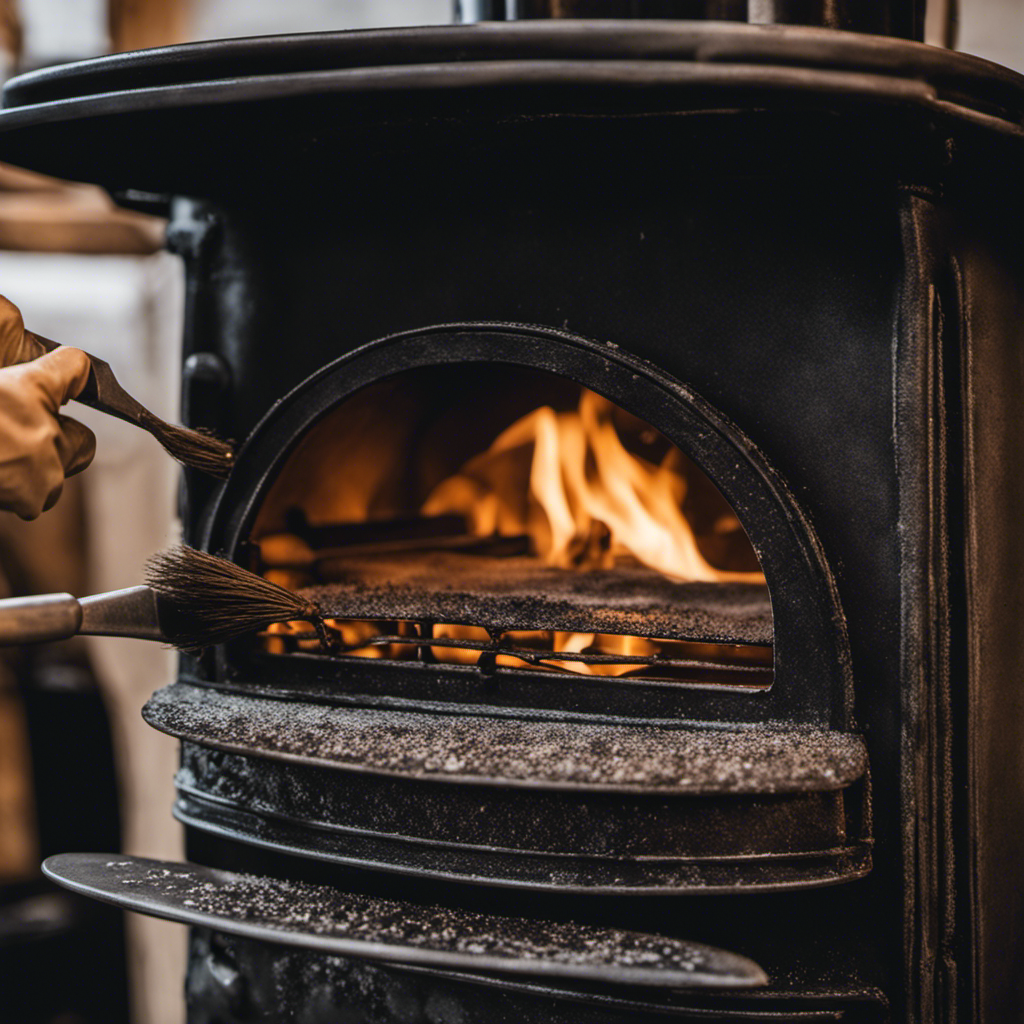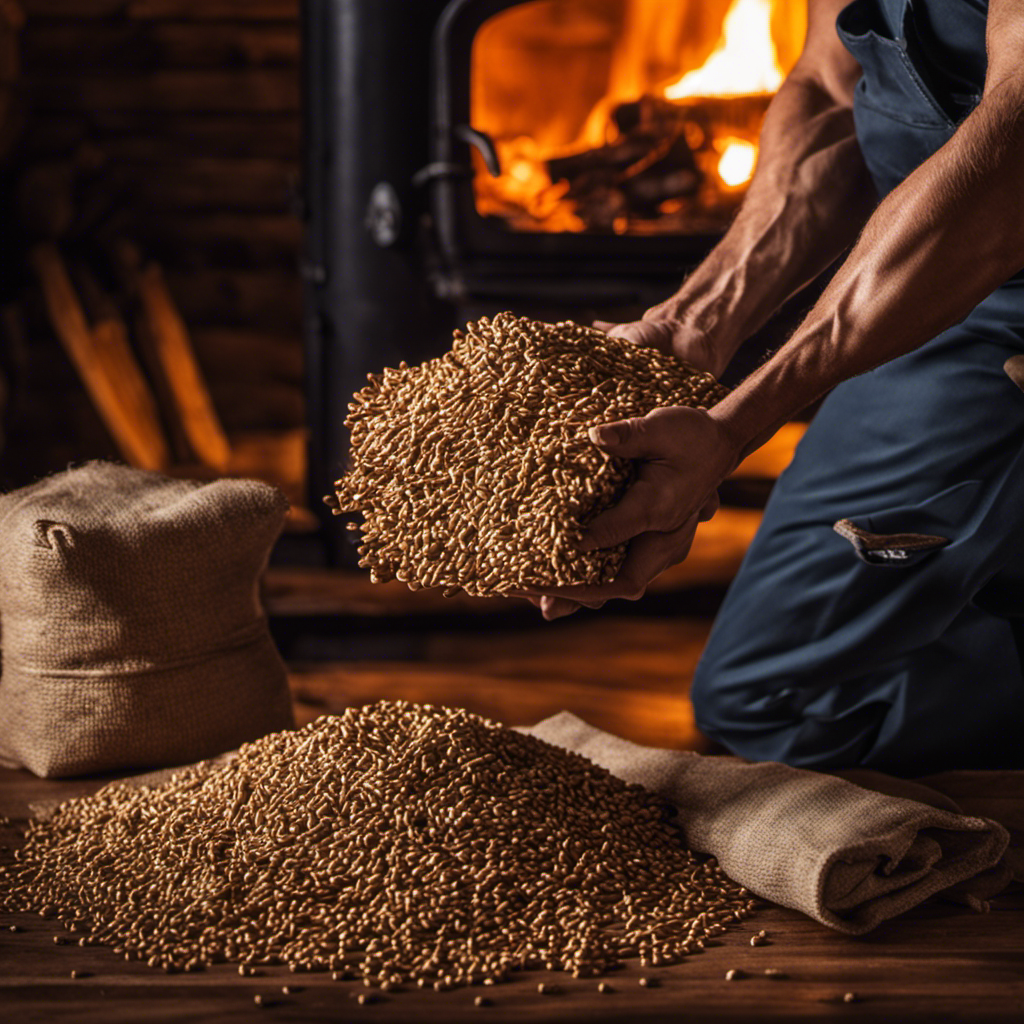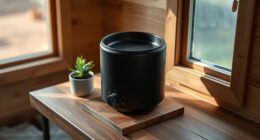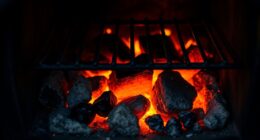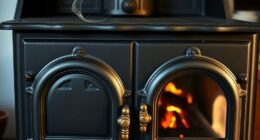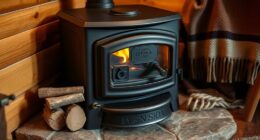As a delighted Morso wood stove owner, I’ve learned that keeping your chimney clean is crucial for revitalizing your stove.
Regular chimney cleaning is vital to ensure optimal performance and prevent potential hazards.
In this article, I’ll guide you through the factors to consider when determining the cleaning frequency, signs that indicate your chimney needs attention, and provide you with a step-by-step guide on how to clean it effectively.
Let’s delve into the world of chimney maintenance for your beloved Morso wood stove.
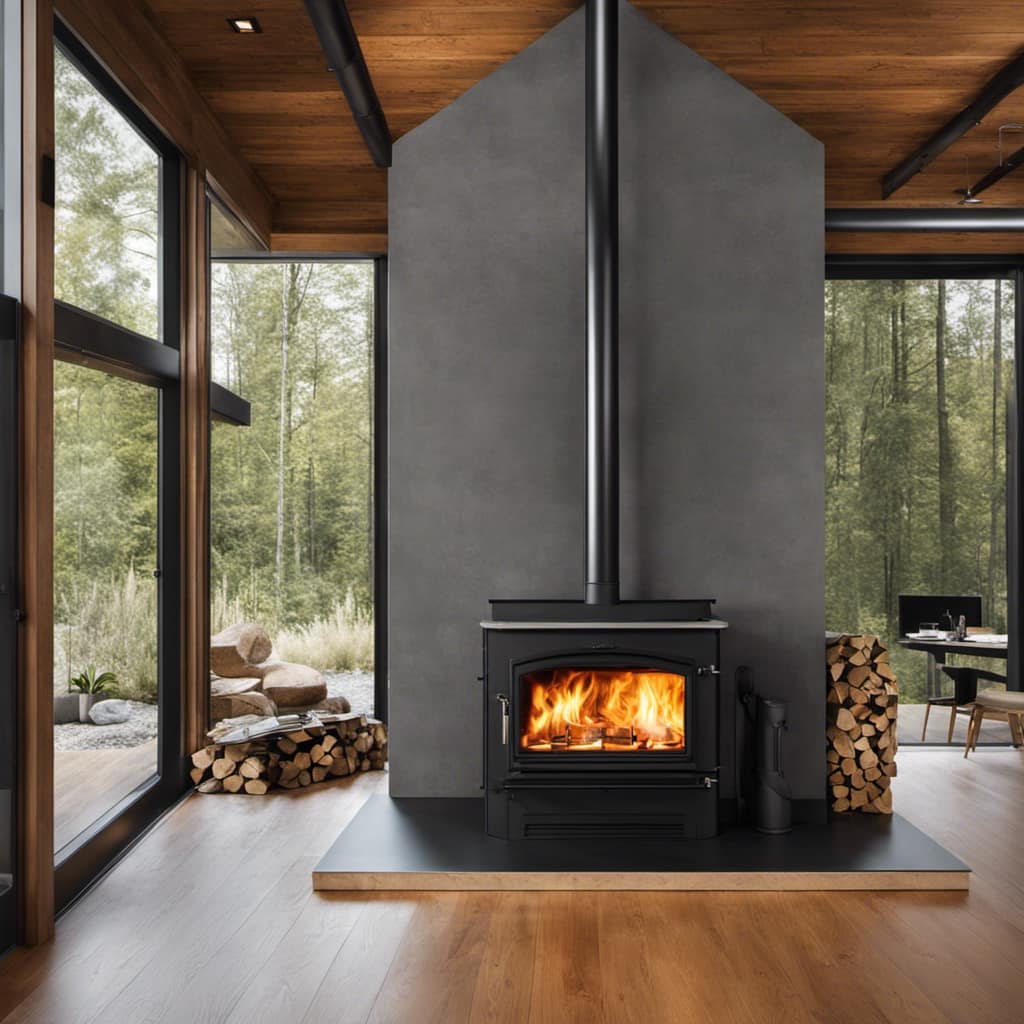
Key Takeaways
- Regular chimney cleaning is important for optimal performance and safety of Morso wood stoves.
- Cleaning frequency depends on factors such as the type of wood burned and stove efficiency, but it is generally recommended at least once a year.
- Signs that indicate the need for chimney cleaning include strong smell and sticky residue, excessive smoke, reduced draft, soot accumulation, and chimney fires.
- Proper maintenance, including regular inspections, using seasoned wood, and installing a chimney cap, helps extend the lifespan of the Morso wood stove chimney.
Importance of Regular Chimney Cleaning for Morso Wood Stove Owners
I understand the importance of regular chimney cleaning as a Morso wood stove owner.
Chimney cleaning is essential for the proper functioning and safety of your wood stove.
The frequency of cleaning your chimney will depend on the type of wood stove you have.
For Morso wood stoves, it’s generally recommended to clean the chimney at least once a year.
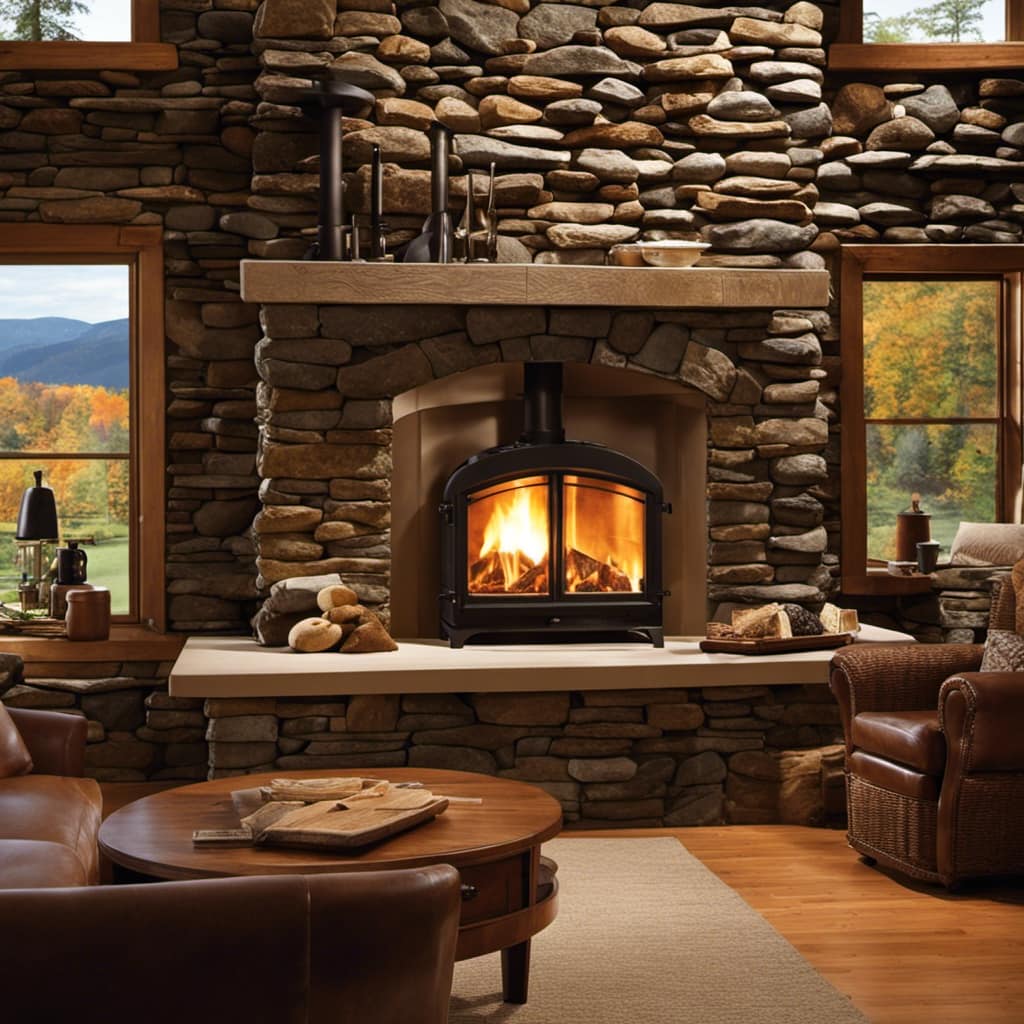
However, if you use your wood stove heavily or burn softwood, more frequent cleaning may be necessary.
When cleaning the chimney of a Morso wood stove, there are common mistakes to avoid.
These include using inappropriate tools, not wearing protective gear, and not properly inspecting the chimney for any signs of damage.
Taking these precautions will help ensure that your chimney is clean and free from any potential hazards.
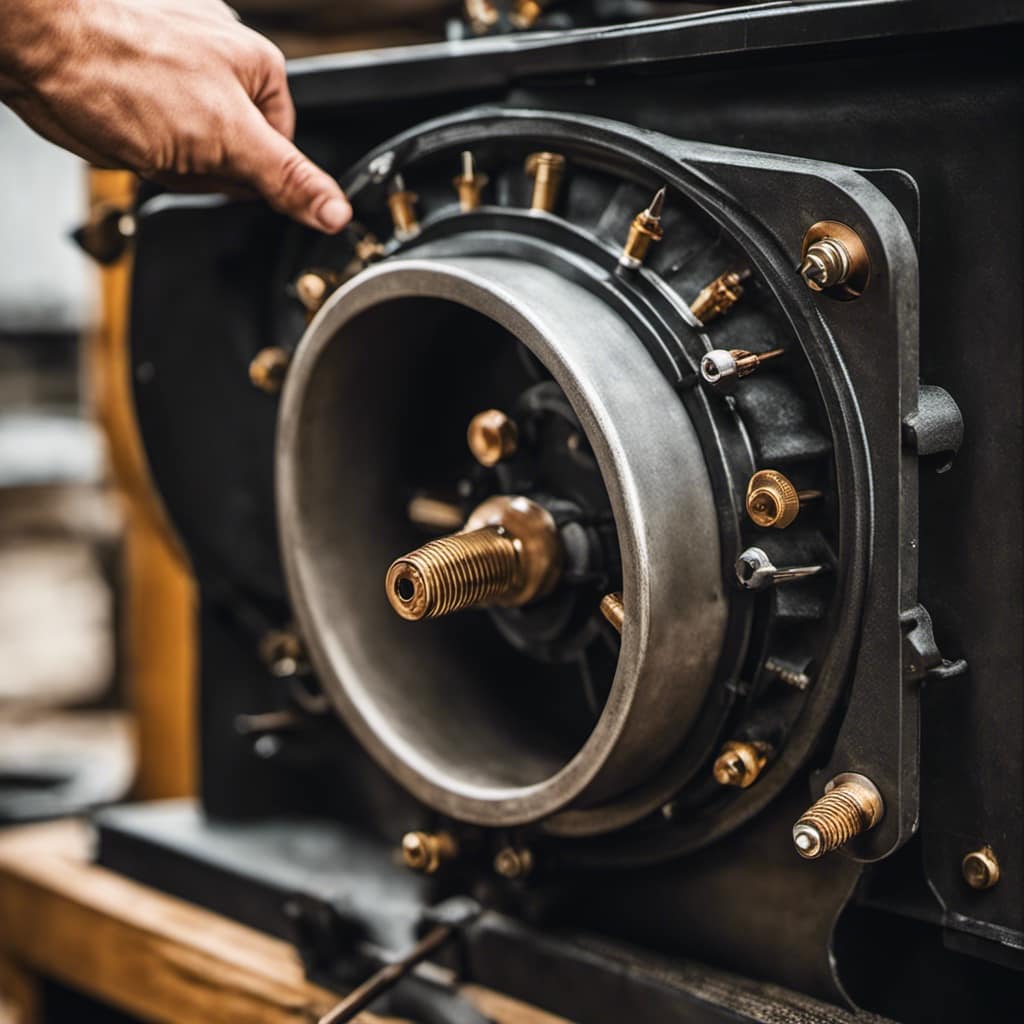
Now let’s discuss the factors to consider when determining chimney cleaning frequency for Morso wood stoves.
Factors to Consider When Determining Chimney Cleaning Frequency for Morso Wood Stoves
One important factor to consider when determining chimney cleaning frequency for Morso wood stoves is the amount of creosote buildup. Creosote is a highly flammable substance that forms when wood is burned, and it can accumulate in the chimney over time.
Factors to consider when determining the cleaning frequency include the type of wood being burned, the frequency of stove use, and the efficiency of the stove. It’s generally recommended to have your chimney cleaned at least once a year, but certain factors may require more frequent cleanings.
Following best practices for burning wood, such as using dry seasoned wood and maintaining proper airflow, can help minimize creosote buildup. Regular inspections and monitoring for signs of excessive creosote, such as a strong odor or dark, sticky residue, can also indicate when your Morso wood stove chimney needs cleaning.
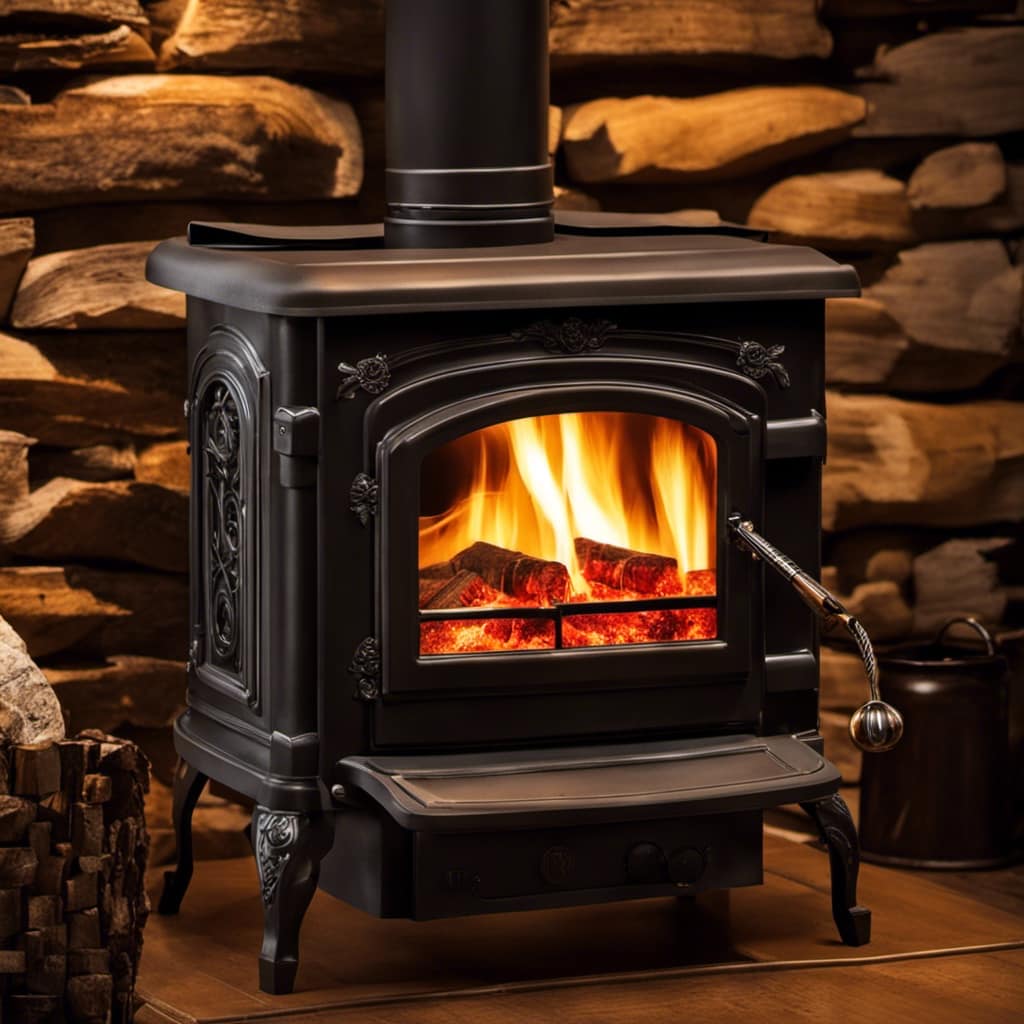
Signs That Indicate Your Morso Wood Stove Chimney Needs Cleaning
If you notice a strong smell and a build-up of dark, sticky residue in your Morso wood stove chimney, it’s a sign that it needs cleaning. Regular chimney cleaning is essential to maintain the efficiency and safety of your wood stove. Here are four signs that indicate your Morso wood stove chimney needs cleaning:
Excessive smoke: If you notice an unusual amount of smoke coming out of your chimney, it could be a sign of a blockage caused by creosote buildup.
Reduced draft: A decrease in the draft can indicate a clogged chimney, preventing proper airflow and causing smoke to enter your home.
Soot accumulation: If you see black soot on the walls of your chimney or fireplace, it means there’s a buildup of creosote, a byproduct of burning wood.
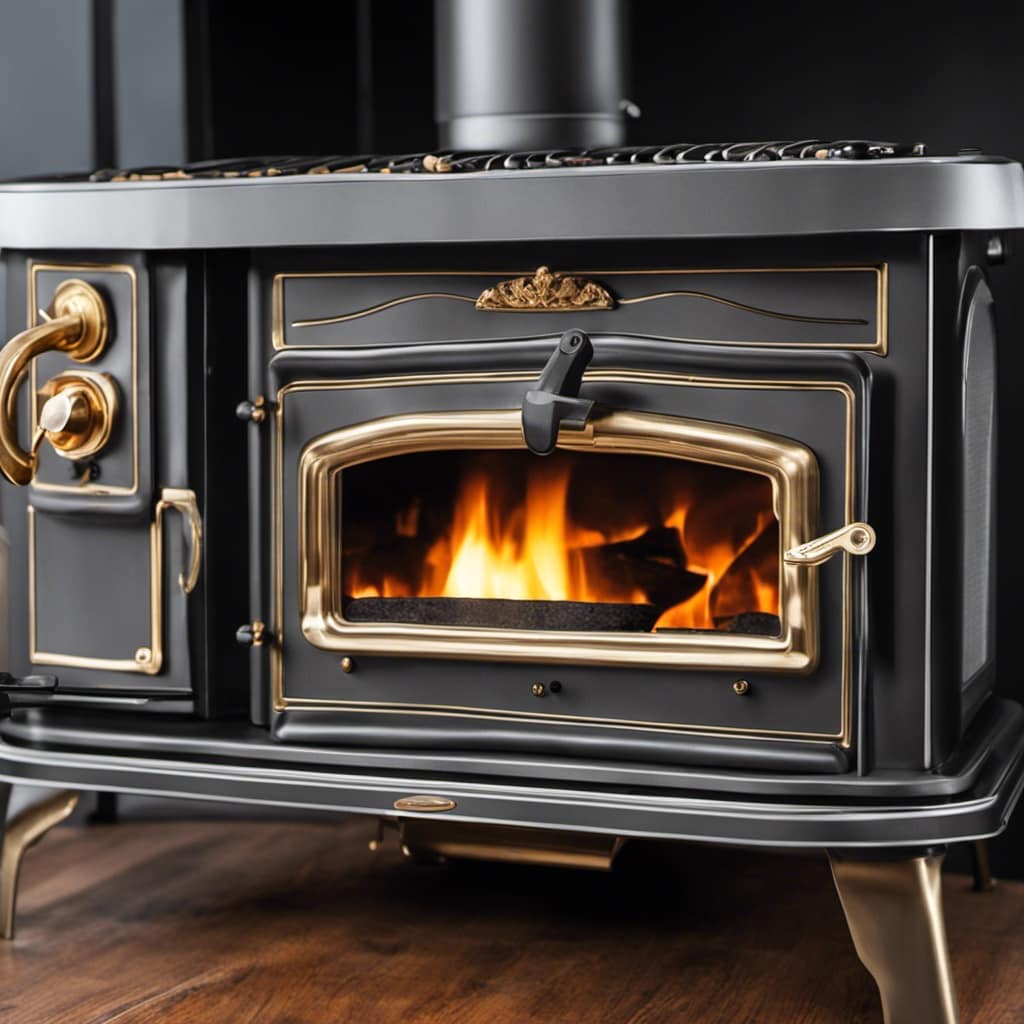
Chimney fires: A chimney fire is a dangerous situation that can occur due to the ignition of creosote deposits within the chimney.
Knowing these signs is crucial, as it helps you determine when to hire professionals or use DIY chimney cleaning methods.
Now, let’s move on to the step-by-step guide to cleaning the chimney of your Morso wood stove.
Step-by-Step Guide to Cleaning the Chimney of Your Morso Wood Stove
Cleaning my Morso wood stove chimney is essential for maintaining its efficiency and safety, so let’s dive into the step-by-step guide.
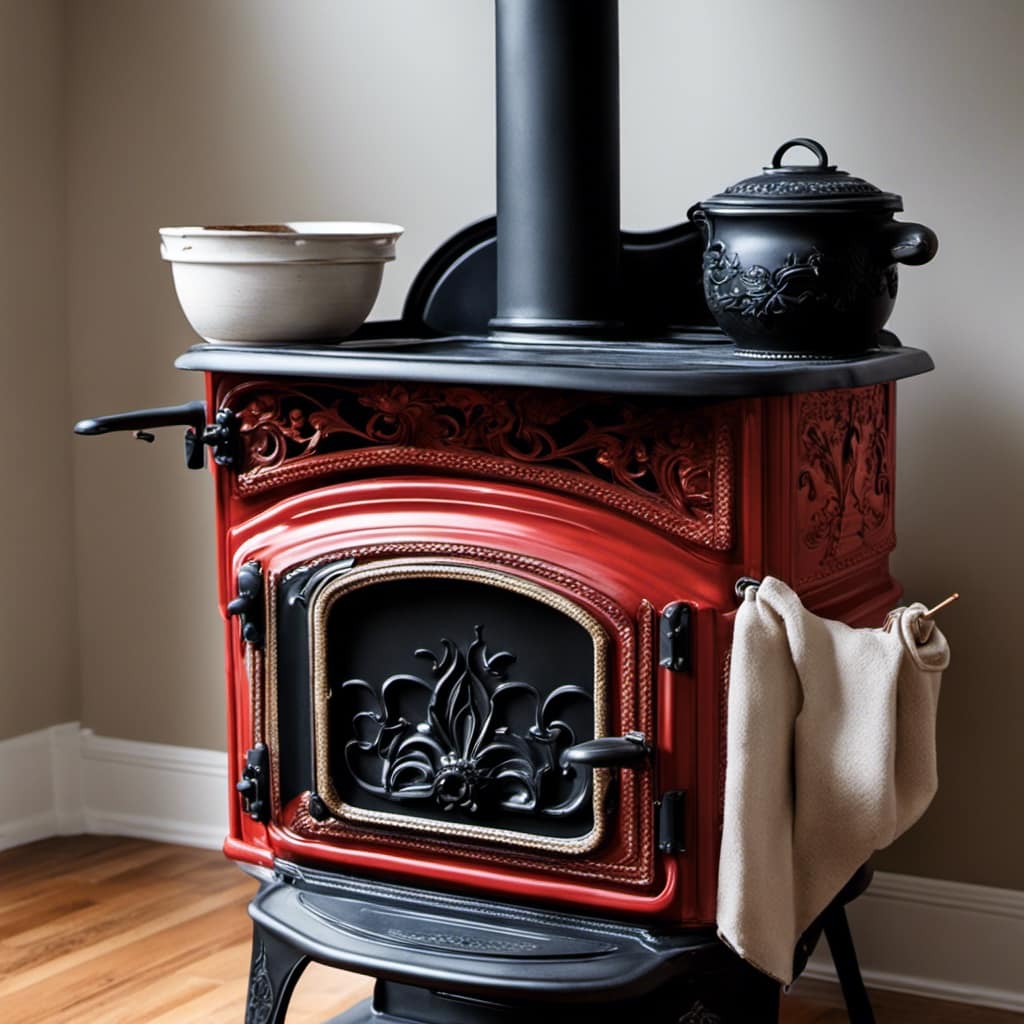
The first step is to ensure that the stove is completely cool before starting the cleaning process.
Next, gather the necessary tools such as a chimney brush, extension rods, and a vacuum cleaner with a brush attachment.
Begin by removing the baffle plate or any other obstructions inside the chimney.
Attach the chimney brush to the extension rods and carefully insert it into the chimney.

Use an up and down motion to loosen any creosote buildup.
Once the chimney is clean, use the vacuum cleaner to remove any remaining debris.
Finally, inspect the chimney for any damage or cracks and make any necessary repairs.
Common mistakes to avoid when cleaning a Morso wood stove chimney include using improper tools, neglecting to clean the chimney regularly, and failing to inspect for damage.
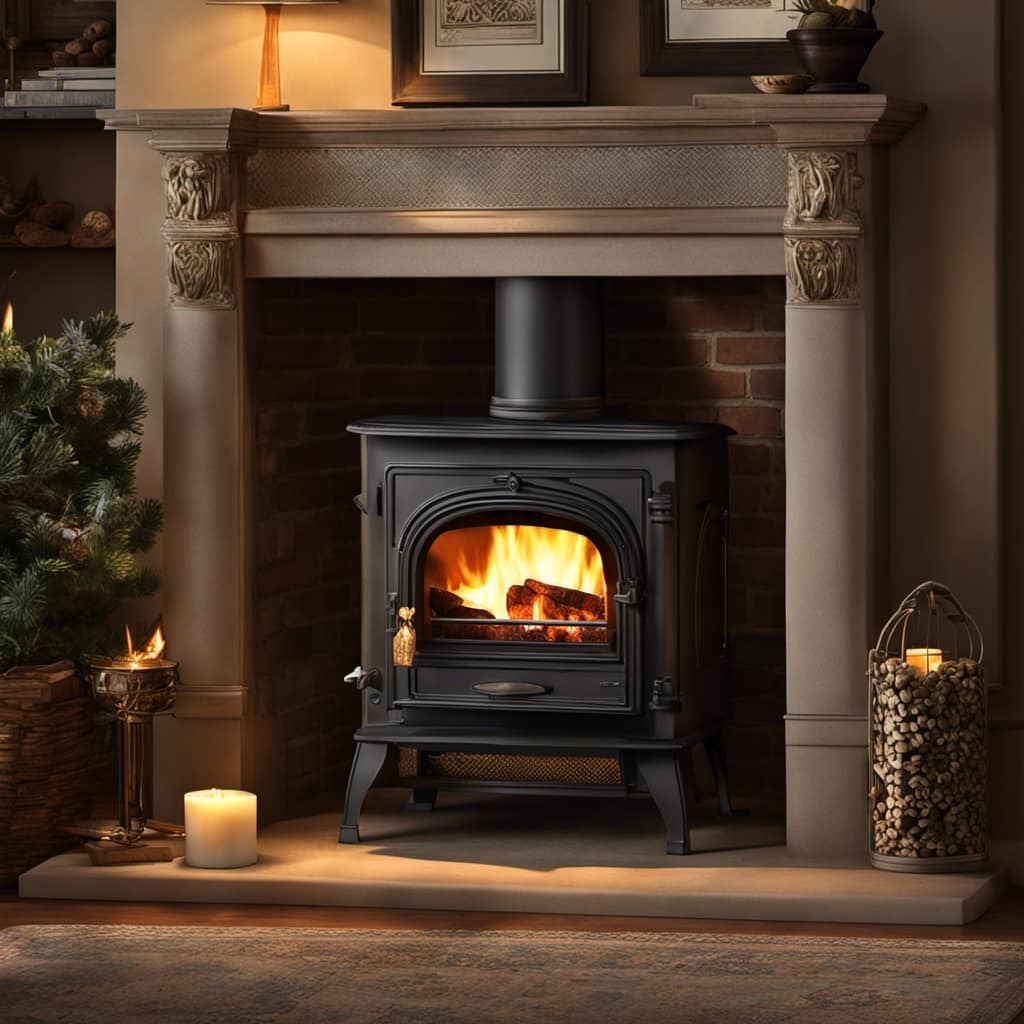
Maintenance Tips to Extend the Lifespan of Your Morso Wood Stove Chimney
As I continue to learn about maintaining my Morso wood stove chimney, it’s important to remember that regular inspections and cleanings can greatly extend its lifespan.
Here are some tips for preventing chimney fires and common mistakes to avoid when cleaning a wood stove chimney:
Schedule regular inspections: A professional chimney sweep should inspect your chimney at least once a year to identify any potential issues or build-up.
Clean the chimney regularly: Remove creosote and other debris from the chimney walls to prevent chimney fires. Use appropriate tools and equipment for safe and effective cleaning.
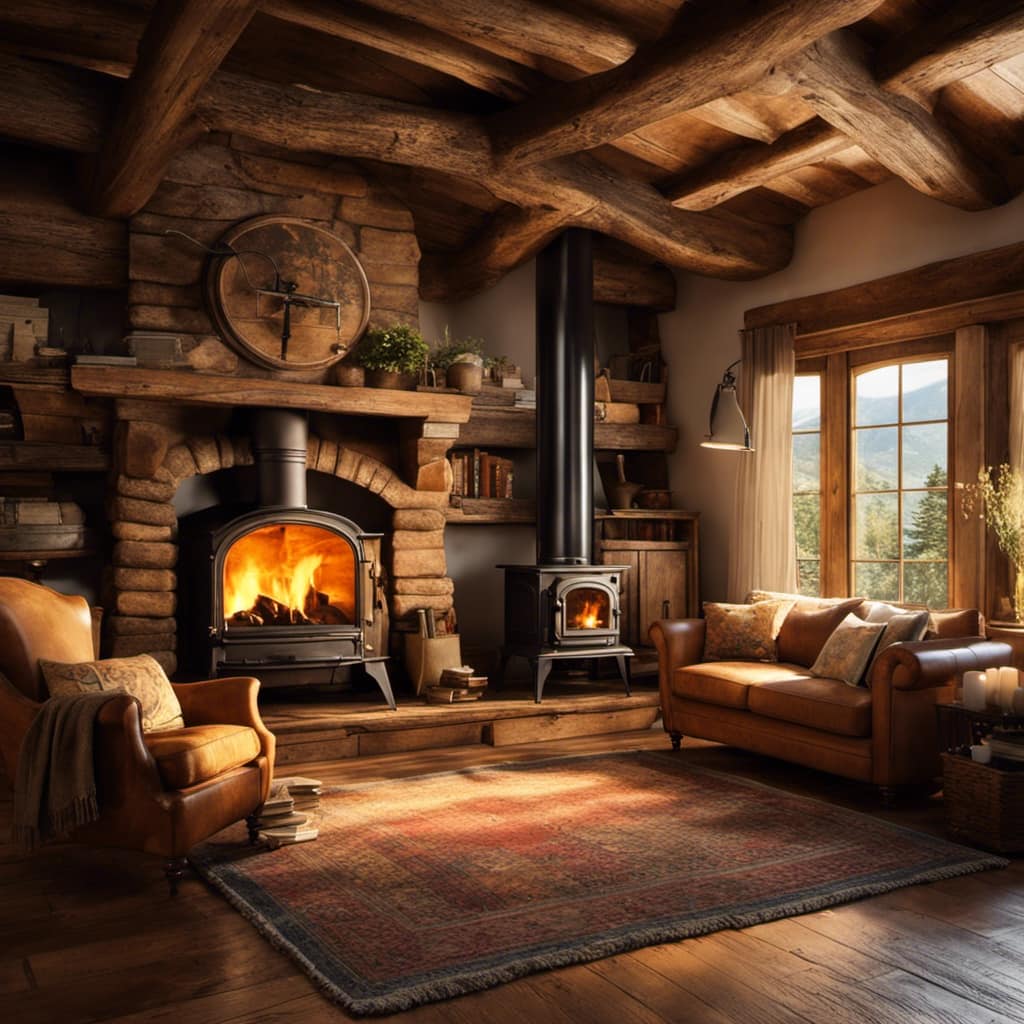
Use the right fuel: Burning seasoned wood reduces the amount of creosote build-up in your chimney. Avoid burning wet or green wood, as it produces more creosote.
Install a chimney cap: A chimney cap prevents debris, animals, and rain from entering your chimney, reducing the risk of blockages and fires.
Frequently Asked Questions
What Are the Risks of Not Regularly Cleaning the Chimney of a Morso Wood Stove?
Neglecting chimney cleaning poses serious risks, such as chimney fires, carbon monoxide poisoning, and reduced stove efficiency. Regular chimney inspections are crucial to prevent these dangers and ensure the safe and optimal functioning of a Morso wood stove.
Can I Use Any Type of Cleaner or Brush to Clean the Chimney of My Morso Wood Stove?
I use a stiff wire brush and a chimney cleaner specifically designed for my Morso wood stove. It’s important to use the proper tools and techniques to ensure a thorough cleaning.
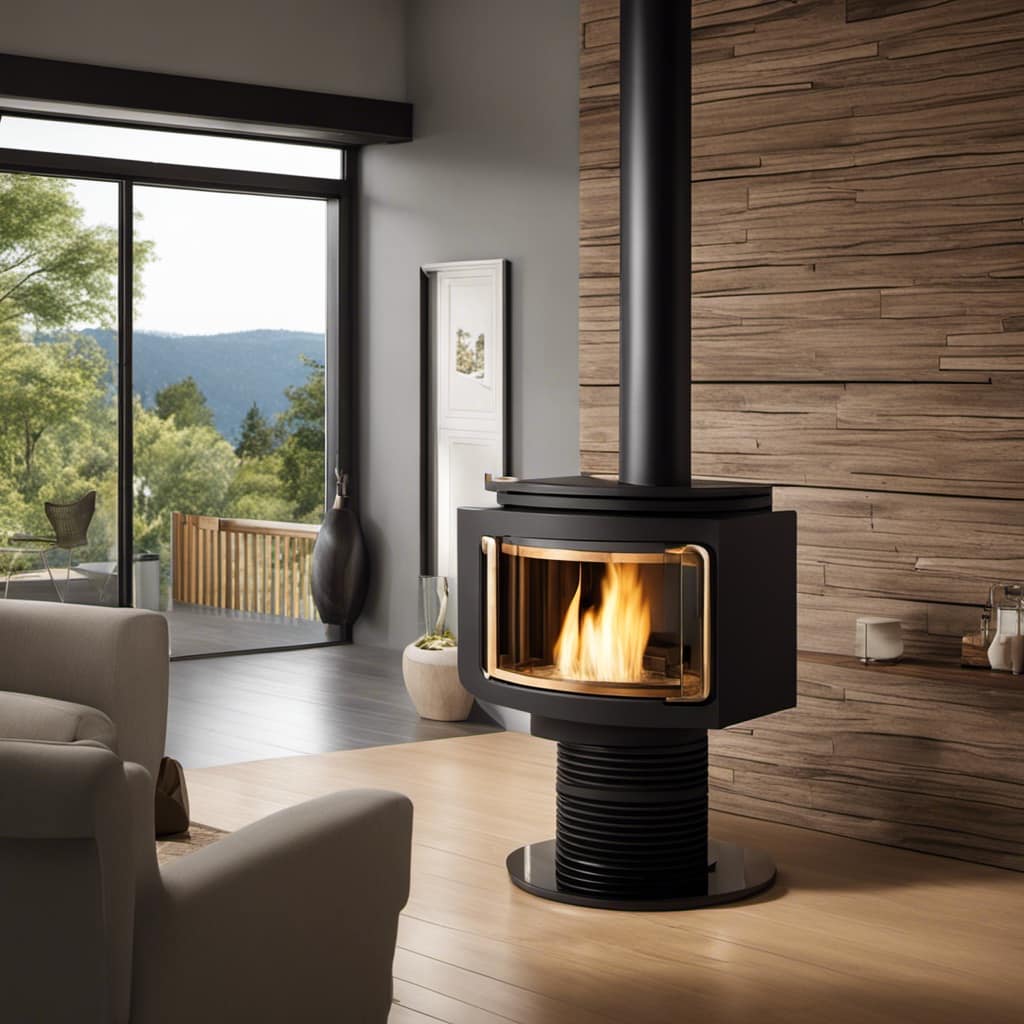
How Often Should I Inspect My Chimney for Any Potential Issues or Damage?
Inspecting my chimney regularly is crucial for maintaining my Morso wood stove. I need to be vigilant for any signs of damage, such as cracks or creosote buildup, to ensure safe and efficient operation.
Are There Any Specific Safety Precautions I Should Take When Cleaning the Chimney of My Morso Wood Stove?
When cleaning my Morso wood stove chimney, it’s important to prioritize safety. I always wear protective gear, use a sturdy ladder, and follow the manufacturer’s instructions. Regular cleaning ensures optimal performance and reduces the risk of chimney fires.
What Are Some Common Mistakes to Avoid When Cleaning the Chimney of a Morso Wood Stove?
Common mistakes to avoid when cleaning the chimney of a Morso wood stove include using improper tools, neglecting regular maintenance, and not following proper cleaning techniques. It’s crucial to ensure the safety and efficiency of your stove.
Is the Cleaning Process the Same for Different Brands of Wood Stoves?
When it comes to cleaning Lopi Model 1750 stove or other wood stove brands, the process may vary slightly. However, the general steps of cleaning the stove, such as emptying the ash, wiping down the exterior, and inspecting the components, are similar across different brands. Always refer to the specific manufacturer’s guidelines.
Conclusion
In conclusion, just as the wise gardener tends to their garden regularly to ensure its vitality, Morso wood stove owners must diligently clean their chimneys to maintain the longevity and efficiency of their beloved stoves.
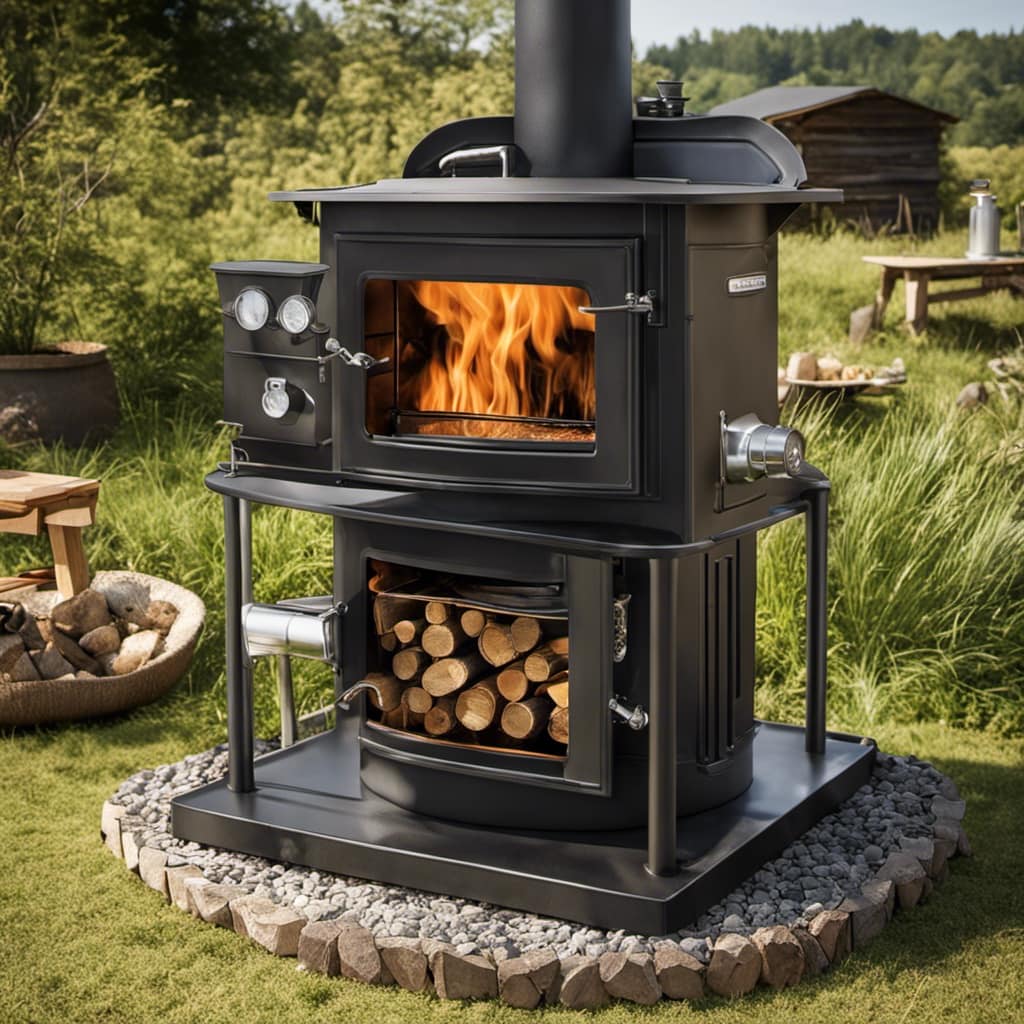
By understanding the importance of regular chimney cleaning, recognizing the signs of buildup, and following the step-by-step guide, owners can ensure a safe and cozy fire experience.
Remember, proper maintenance is the key to extending the lifespan of your Morso wood stove chimney and enjoying its warmth for years to come.
Growing up surrounded by the vast beauty of nature, Sierra was always drawn to the call of the wild. While others sought the comfort of the familiar, she ventured out, embracing the unpredictable and finding stories in the heartbeat of nature.
At the epicenter of every remarkable venture lies a dynamic team—a fusion of diverse talents, visions, and passions. The essence of Best Small Wood Stoves is crafted and refined by such a trio: Sierra, Logan, and Terra. Their collective expertise has transformed the platform into a leading authority on small wood stoves, radiating warmth and knowledge in equal measure.





